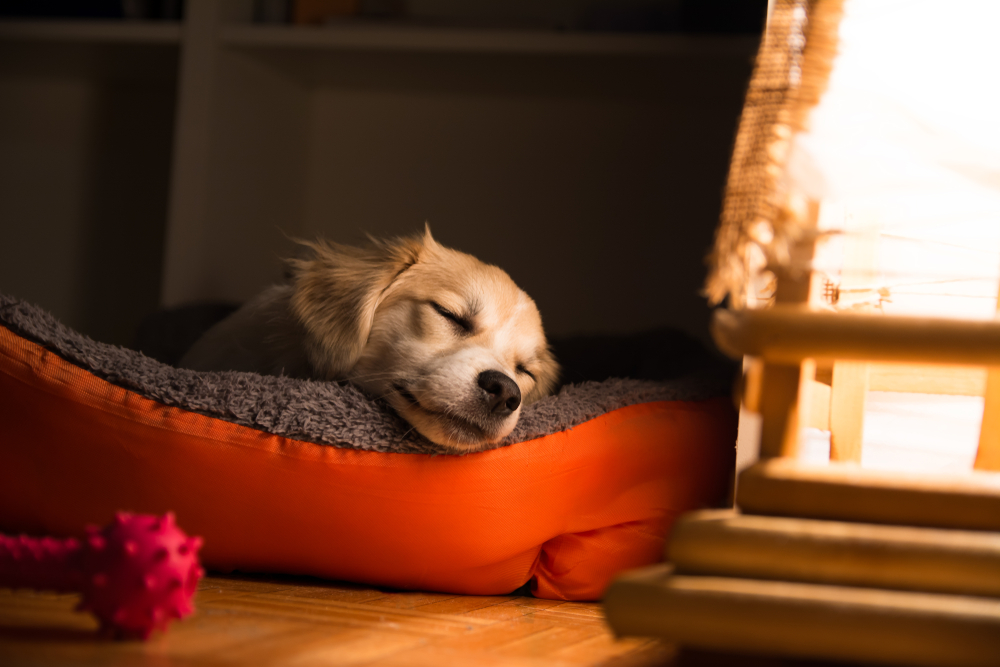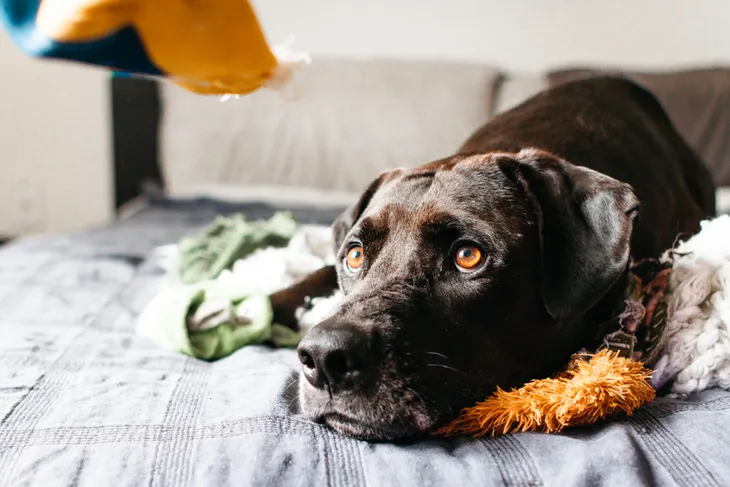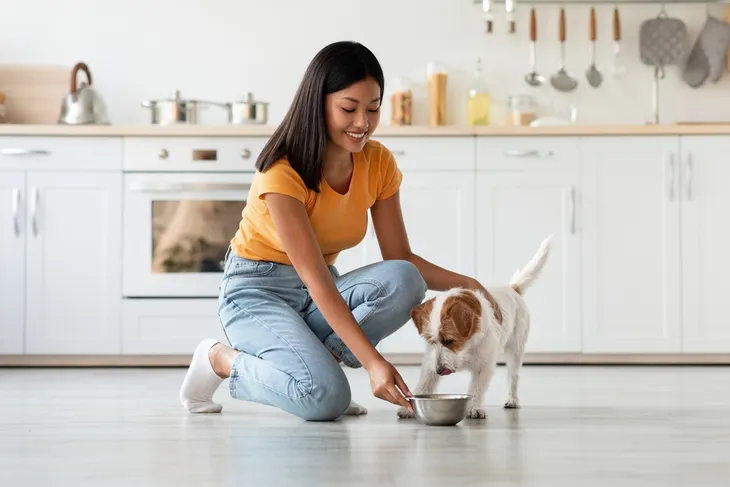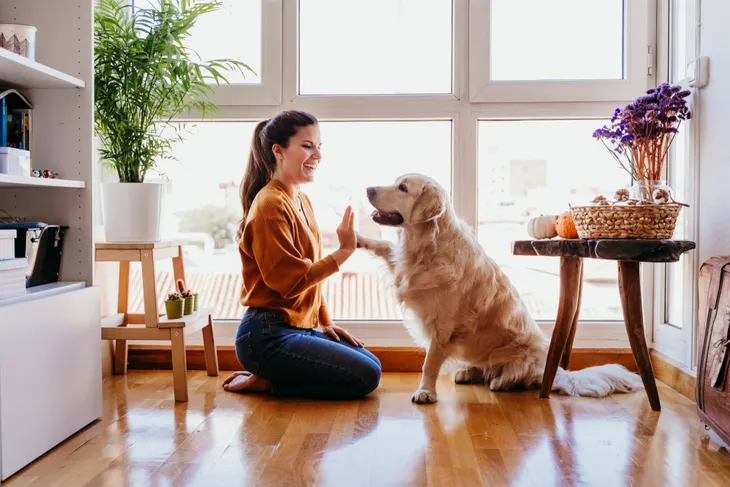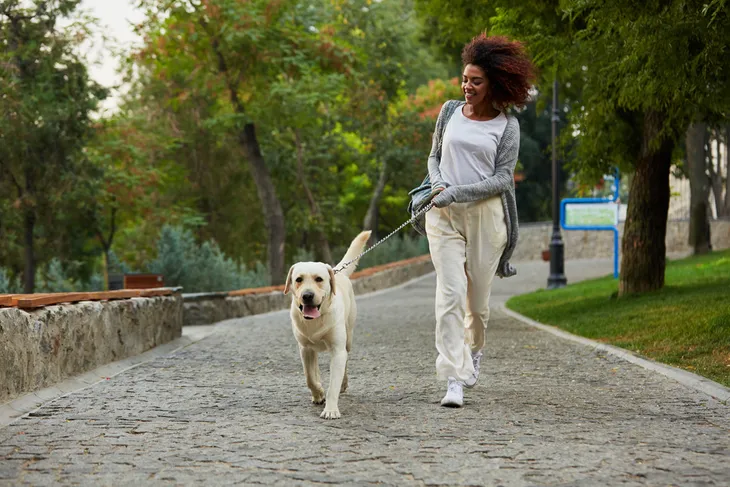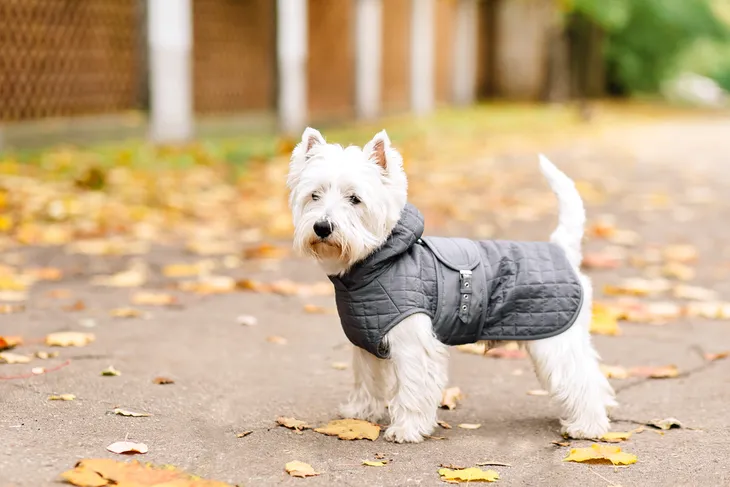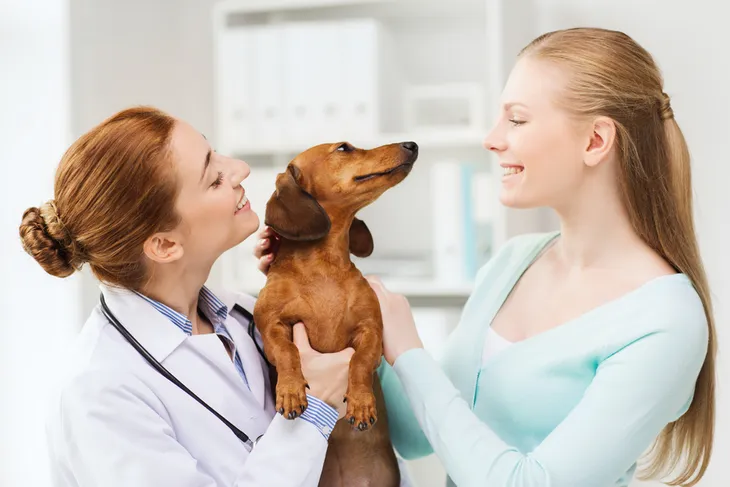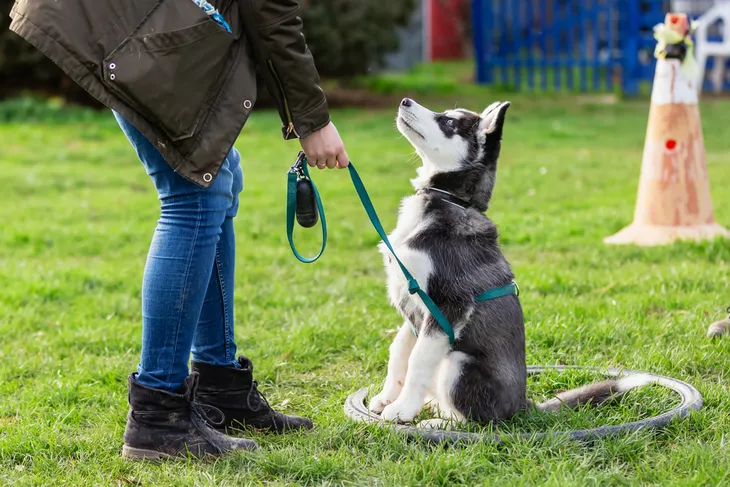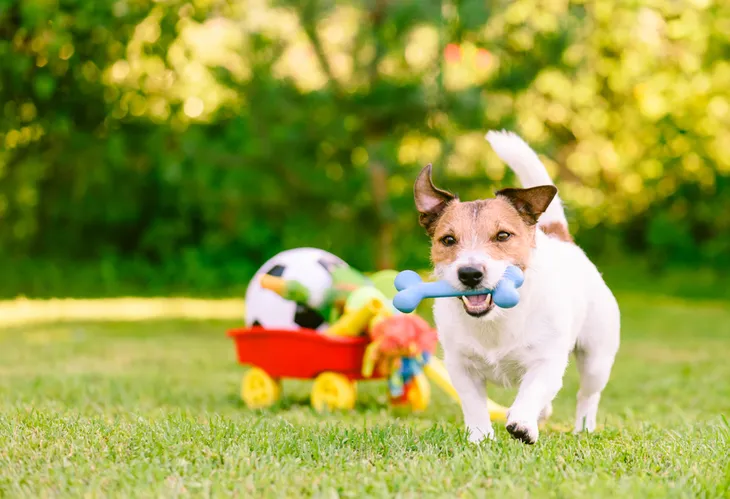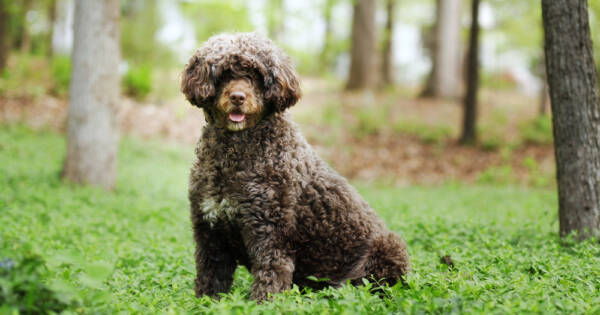- Unchecked disproportionate levels of anxiety can lead to an anxiety disorder which is why you need to get it under control.
- If you notice any signs of anxiety in your dog, it’s important that you talk to your veterinarian to first rule out any other underlying health issues.
- To help reduce anxiety in dogs you should stick to a consistent routine, provide exercise and stimulation, and provide a calm, safe space for your pet. Music therapy, gentle massages, and calming coats may also be beneficial.
- In some cases, medication may be necessary.
Dogs experience stress and anxiety just like humans do and it can affect all breeds. While stress and anxiety can be healthy emotions, says the American Kennel Club (AKC), unchecked disproportionate levels of anxiety can lead to an anxiety disorder. This can lead to behavioral and other health issues. All the more reason to get informed and know how to deal with it.
If you think your dog may be experiencing anxiety, it’s important that you get to the bottom of it right away. Today we’ll briefly cover the signs of anxiety in dogs so you know what to watch for. Then, we’ll dive into a variety of ways you can help reduce anxiety in dogs.
Signs of Anxiety in Dogs
Before easing anxiety, you first need to know the signs. Many dogs use body language to communicate how they’re feeling. If your dog is showing signs of nervousness, stress, or fear they may be dealing with anxiety.
PetMD also says some clinical signs of anxiety in dogs include shaking, pacing, trembling, lip licking, frequent yawning, hypervigilance, and decreased appetite. There can be physiological effects too, such as increased drooling, dilated pupils, increased heart rate and panting, over-grooming, and self-inflicted skin lesions. Paying attention to your dog’s behavior is the best way to recognize signs of anxiety.
Talk to Your Veterinarian
If you notice any signs of anxiety in your dog, it’s important that you talk about it with your veterinarian. In some cases, changes in their behavior can be caused by another underlying medical issue. It’s important to rule out other causes to help your dog get the right treatment.
Ahead of your appointment, be sure to make note of any behavioral changes and provide that information to your vet. During your visit, the vet can perform a physical exam as well as diagnostic tests to confirm your dog is otherwise healthy. From there they can help create a treatment plan to reduce your dog’s anxiety which may include some of the following tips.
Adjust Your Routine
One of the first things you can do to help ease your dog’s anxiety is to assess your daily routine. If your routine is all over the place and not consistent, perhaps it’s time to make your (and their) daily routine more predictable.
Good Housekeeping explains, “having a predictable daily routine that helps your dog anticipate when he’ll get to eat, go outside, and spend time playing with you could help him feel more confident and less nervous.” This may be particularly beneficial for dogs who experience separation anxiety.
Training
The AKC says another effective way to help reduce anxiety is to focus on a few training strategies. One of these strategies is called counterconditioning. The purpose is to “change your dog’s response to the stimuli responsible for anxiety, usually by replacing the anxious or aggressive behavior with a more desirable behavior, like sitting or focusing on the owner,” explains the source.
Another strategy is desensitization which involves the owner slowly introducing the dog to the source of their anxiety. The source notes, it’s best to do this in small doses and at a decreased intensity. A combination of repeated exposure and rewarding positive behavior may be the key to managing your dog’s anxiety.
Keep in mind, training an anxious dog can be a challenge. You may want to consider hiring a professional dog trainer or veterinary behaviorist.
Exercise
Exercise is not only an essential part of a healthy lifestyle, but it’s also a great way to relieve stress for humans and dogs alike. If your dog doesn’t get adequate exercise and playtime, it can cause them to feel cooped up and lonely and may make their anxiety worse.
Exercise is also a great opportunity for bonding time which can be extremely important for dogs with separation anxiety. It will also tire out your furry best friend, says Central California SPCA (CCSPCA).
Calming Coats
Another way you can try to ease your dog’s anxiety is with a calming coat, such as the Thundershirt. These coats are designed to apply gentle, constant pressure to help calm all types of anxiety including noise, travel, separation, and stranger anxiety. It provides a similar effect to swaddling an infant or providing a comforting hug.
The Thundershirt is recommended by veterinarians and trainers and is a medication-free way to try and help ease anxiety. There is also no training required.
Give Your Dog a Massage
Sometimes when we’re feeling particularly anxious or stressed, a deep massage can help ease these feelings. It turns out, the same goes for your furry friend. The CCSPCA explains, “anxiety often causes tensing of the muscles and massage therapy is one way to alleviate tension.”
The source says to start at their neck and work downward using long strokes. Place one hand on your dog while the other massages. If you do this often enough, you may eventually be able to identify where your dog holds their stress. If you can identify it, work in that particular area.
Music Therapy
One way to tune out persistent worry or fear is to listen to music. Your pooch may find it just as relaxing as you do too. Listening to music can help your furry best friend feel calm when you’re away from home, traveling in the car, or during a stressful situation such as fireworks.
The Preventive Vet says recent studies “have shown that playing music reduces stress in dogs at animal shelters, with less barking, lower respiratory rates, and lower levels of the stress hormone cortisol.”
So which music should you play for your dog? The source says reggae and soft rock are the most relaxing genres for dogs in shelters, but classical music can also calm an anxious dog. The source notes, your dog can get used to the same kind of music after 7-days and then may begin to show more signs of stress. With this in mind, be sure to switch up your playlists.
Create a Relaxing, Safe Space
It’s also important to create a relaxing and safe environment for your anxious dog. Sometimes that requires a designated space that they can go to when they’re feeling very anxious such as during loud noise events or when visitors come to your home.
Dr. Konency tells PetMD that when your dog can’t be calmed with praise or reward, a quiet space with no stimulation can help them “turn off all the input and simply unwind.” Turning on white noise or music in their sanctuary room may also help drown out surrounding sounds.
Medication May Be Necessary
In some cases, medication may be necessary. This is why it’s important to work closely with your veterinarian. Your vet will likely recommend that you try lifestyle adjustments first but if your dog develops a serious anxiety disorder they may require anti-anxiety medication.
The goal of medication is to help ease your dog’s anxiety and make them happier while still maintaining their personality. There are several medications available from medications that help anxiety-producing events to medications that help senior dogs with cognitive dysfunction syndrome, says the AKC. Talk to your vet to find out if anti-anxiety medication is right for your dog.
Prevention: Lifestyle Changes
If your dog hasn’t developed anxiety, it’s important to take preventative steps to decrease their chances in the future. Certain lifestyle adjustments like socializing your pet by introducing them to new people, animals, and places can help prevent an exaggerated response in the future.
The AKC says obedience training can help lay a foundation of a healthy relationship and establish trust, both essential for preventing and managing an anxious dog. If you don’t already, it’s very important to provide your dog with regular exercise and stimulation to promote your dog’s physical and mental health. The AKC explains, “a stimulated dog is less likely to pick up destructive behaviors, and good nutrition is equally important for your dog’s health.”
Prevention: Remove Triggers
If your dog has been diagnosed with anxiety, one way you can help avoid or prevent anxiety-provoking situations is to remove their anxiety triggers. You can work with your vet to identify possible stressors and remove them to see if it helps reduce your dog’s anxiety.
For example, if your dog is anxious around other dogs or people, you’ll want to avoid dog parks. Instead, opt for solo walks or playtime in a field or fenced-in yard where you know there won’t be a lot of other people or dogs. Identifying your dog’s triggers can help you prepare for these situations in advance.
